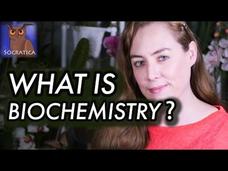Curated Video
Elements vs Alloys
We compare melting points of lead and tin to the melting point of their alloy, solder. By timing how long it takes samples of each to melt, we discover that the melting point of solder is actually lower than those of both lead and tin....
Curated Video
Fatty acids
Fatty acids are vital for energy, cell structure, and managing inflammation. Discover their types and functions in the human body. Whether it's saturated, unsaturated, or the crucial omega-3s, we break down how these molecules influence...
Curated Video
Liquid Nitrogen Demos
We look at how different materials change when they are exposed to liquid nitrogen. Flowers become frozen and stiff and the petals snap. A banana hardens and is strong enough to be used as a hammer and a squash ball becomes very brittle...
Curated Video
Reactivity Series: Comparing the Reactivity of Group 1 and Group 2 Metals
We compare the reactivity of Group 1 and Group 2 metals. We add sodium and then potassium to water. We observe the reactions. Next we add magnesium and then calcium to hydrochloric acid and observe the reactions. The results let us put...
Curated Video
What are carbon-based molecules
Carbon-based molecules are the basis of life as we know it. Molecules like lipids, proteins, nucleic acids, and carbohydrates that make up all living things have one thing in common - carbon.
Curated Video
Hydrolysis of carbohydrates
Hydrolysis is a water-based chemical reaction, where water is used to break down a specific substance or molecule. In this video, we will look at a specific type of hydrolysis - hydrolysis of carbohydrates. We will learn how water is...
The Royal Institution
Jim Al-Khalili - Quantum Life: How Physics Can Revolutionise Biology
In this Friday Evening Discourse at the Royal Institution, Professor Jim Al-Khalili explores how the mysteries of quantum theory might be observable at the biological level. Although many examples can be found in the scientific...
Curated Video
Instant Crystals
We use a supersaturated solution of sodium ethanoate to demonstrate instant crystallisation. Sodium ethanoate is added to water and is then heated to allow all of the crystals to dissolve. When it is cooled it forms a supersaturated...
Curated Video
These are the 4 main types of carbon-based molecules necessary for life
There are 4 main types of carbon-based molecules important to life. They are the building blocks for every living organism on this planet. In this video, I will give you a quick introduction to each type with some fun examples.
GPB Television
Chemistry 502: The World of Atoms is Not Enough – Bonding Part II
"The name is Bond. James Bond." Or is that "Chemical Bond?" Assign the viewing of the video as homework, and then have your chemists come to class to practice drawing electron dot diagrams and Lewis structures with the several bonus...
Crash Course
Water - Liquid Awesome
If H2O is water and H2O2 is hydrogen peroxide, what is H2O4? Drinking, bathing, and cooking among others. Viewers of a short video explore water through its molecular structure, its ability to stick to itself through adhesion (cohesion...
Socratica
What Is Biochemistry?
Watch as chemistry comes alive! Socratica's biology playlist kicks off with a simple video detailing the principle components of biochemistry. Content includes carbohydrates, proteins, and nucleic acids. The narrator describes each class...




